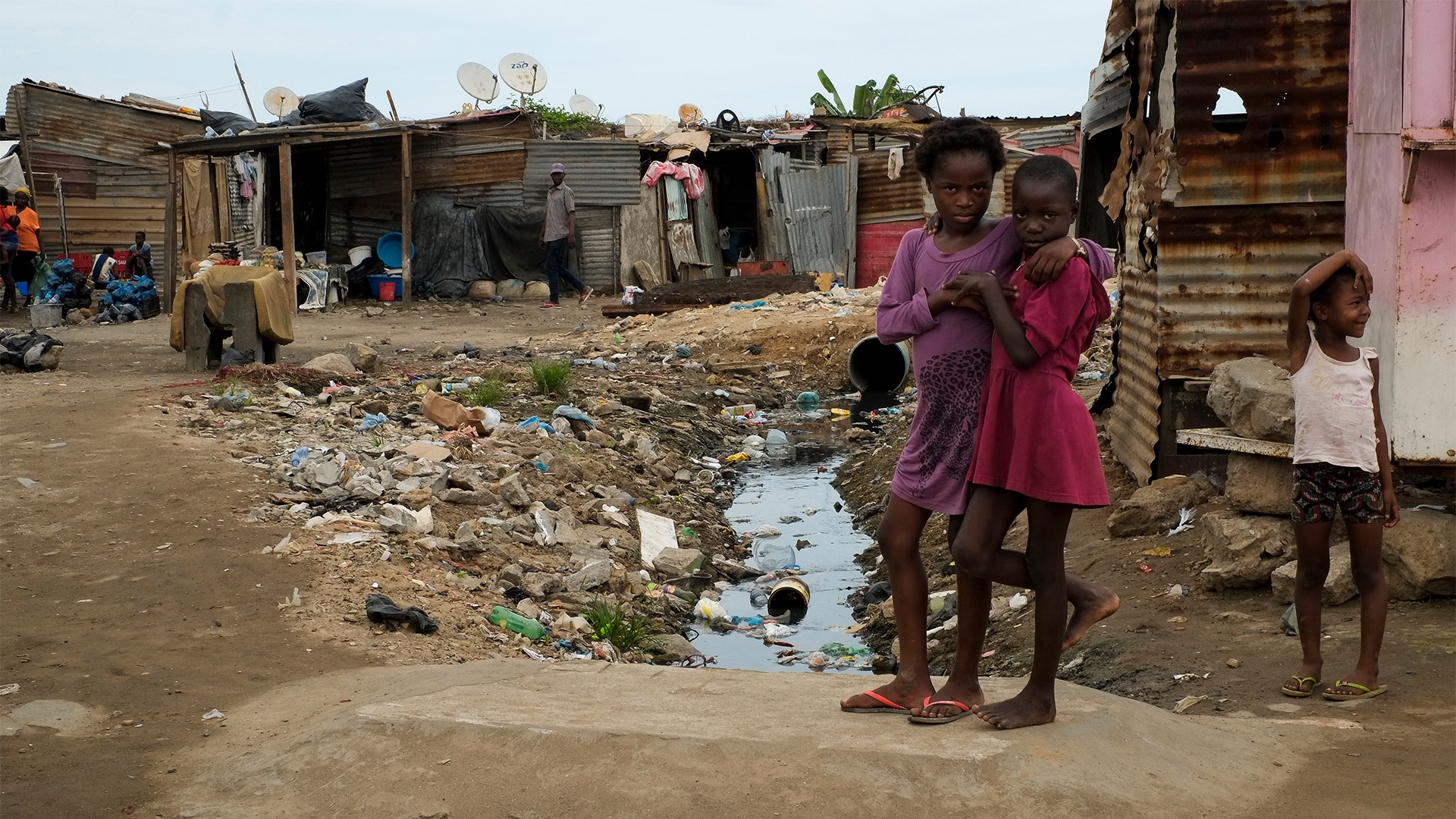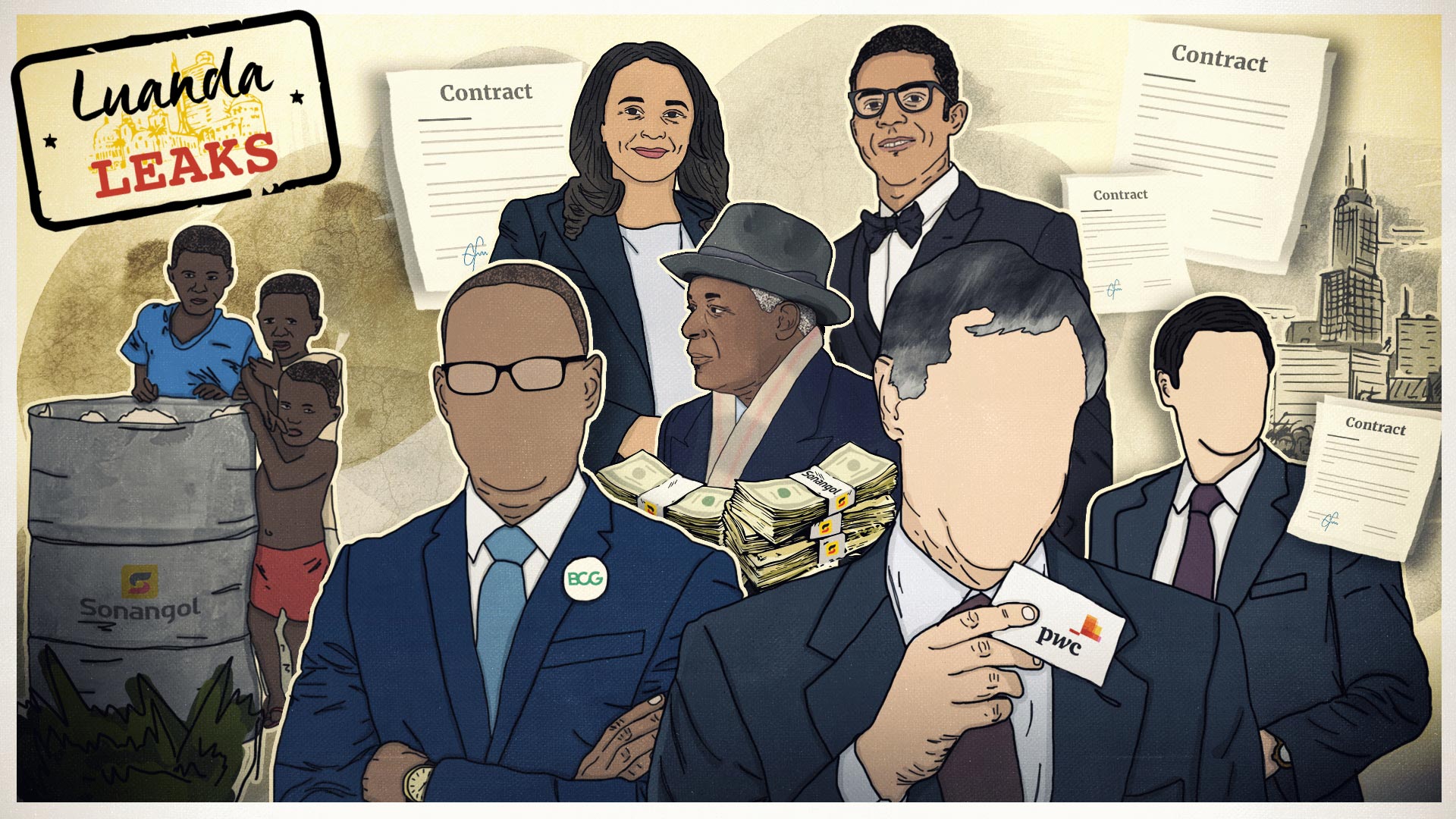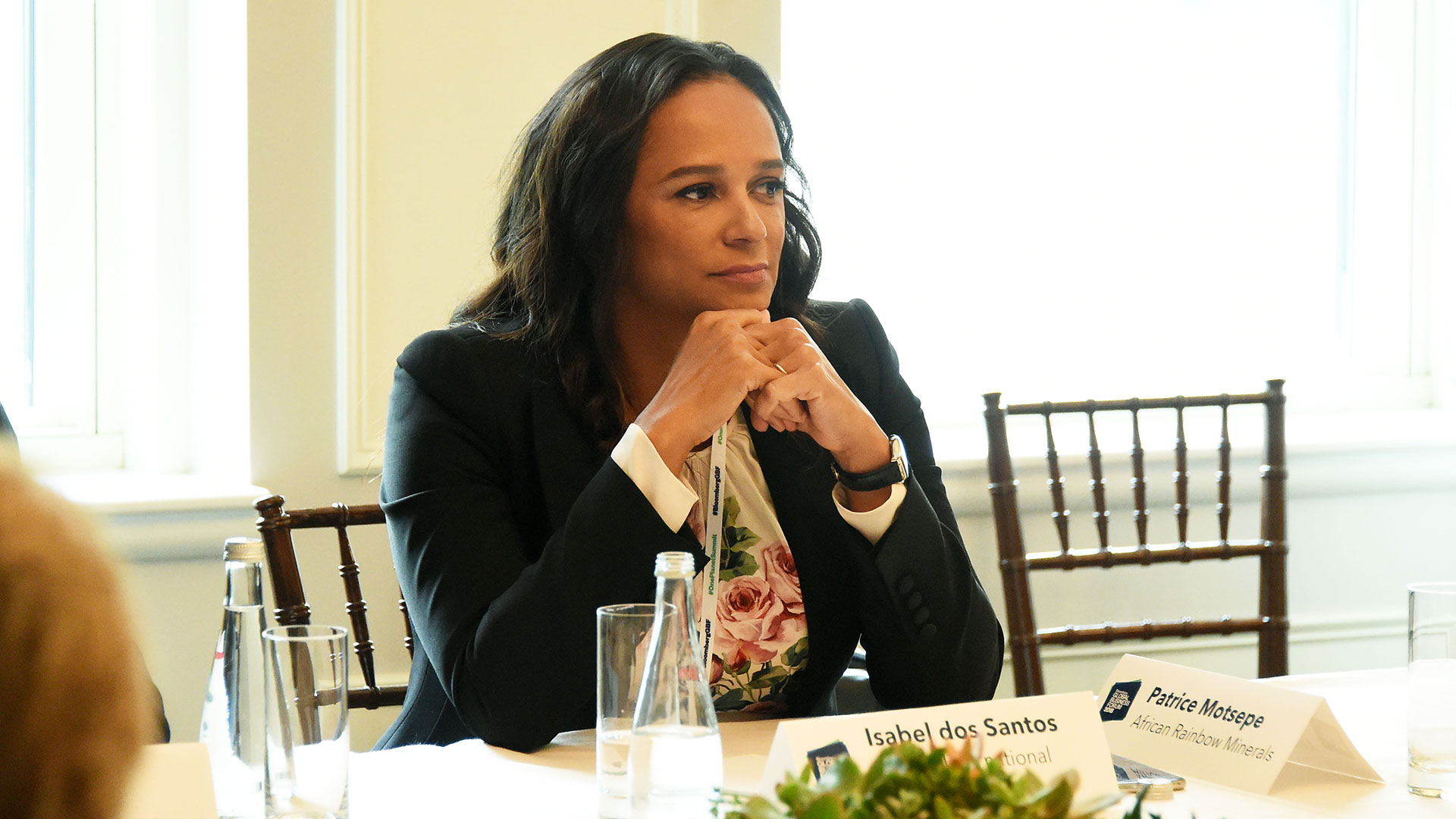It was after midnight when the police came to Areia Branca, a fishing community on a spit of sand not far from the heart of Luanda, Angola’s capital city. Excavators followed. When the sun rose, the machines began tearing into homes.
For 50 years, the neighborhood – “White Sand” in English – was a haven for thousands of families. Schoolteachers, city officials and tilapia sellers relaxed after work in spacious backyards. Ocean breezes cooled them and helped keep mosquitos away.
But the same qualities that attracted its working class and poor residents also made it ideal — in the view of a business consortium led by Isabel dos Santos, daughter of the country’s autocratic president — for a coastal road and luxury hotel to serve the elite of one of Africa’s fastest-growing cities.
The June 2013 evictions were sudden, and brutal, human rights activists and former residents say.
Police and military personnel, including members of the presidential guard, handcuffed objectors and beat them with clubs, according to complaints compiled by Luanda-based nonprofit SOS Habitat. Police threw televisions, generators, mattresses, pots and boat engines into the sea. They shut down access to the telephone network.
Residents were ordered to stay put until it was over. “They kept us for seven days in front of our ruined houses, in the open air, without food or water,” said Talitha Miguel, a 41-year-old former schoolteacher.
When allowed to leave, many residents settled a few hundred yards away in an overcrowded slum next to a flood-prone drainage ditch.
The Areia Branca evictions were to make way for a proposed $1.3 billion urban redevelopment plan championed by dos Santos. A few months before residents were forced out, her company received presidential approval to manage the project.
The story of the evictions, and the hardships suffered by the displaced people of Areia Branca, emerged as part of the Luanda Leaks investigation into more than two decades of inside deals benefiting Africa’s wealthiest woman. The reporting, from the International Consortium of Investigative Journalists and 36 media partners, also revealed how Western companies and professional services advisers helped build and maintain the dos Santos empire.

The reporting was sparked by a leak of more than 715,000 emails, contracts and other documents, which were given to ICIJ by the Platform to Protect Whistleblowers in Africa, a Paris-based advocacy group. On Monday, lawyer and PPLAAF chief William Bourdon revealed that Rui Pinto, the author of a whistleblower website called Football Leaks, had provided his organization with the Luanda Leaks documents.
The documents don’t describe or refer to the violent upheaval experienced by the 3,000 families in Areia Branca, but they do include maps, meeting minutes, scientific studies, invoices and other files related to decisions that sealed the community’s fate. To confirm the links between the evictions and the dos Santos-backed development project, ICIJ spent months comparing leaked material to information gathered in Luanda from other documents and interviews.
“High-level corruption, especially in extremely unequal societies, is always a story about human rights and the abuse of ordinary citizens,” said Claudia Gastrow, an anthropologist at the University of Johannesburg. “There are real victims.”
Master of the master plan
At the turn of the millennium, Luanda was among Africa’s fastest-growing cities. Hundreds of thousands of Angolans had thronged to the relative safety of the seaside capital during a long civil war that ended in 2002. Trash-picking refugees vied for space in alleyways between turquoise-tiled colonial houses, gated condominiums and upscale restaurants. Evictions were common. The city became one of the most expensive and unequal in the world.
The chaos did not reflect the “Paris of Africa” dreams harbored by Angola’s elite.
In 2010, dos Santos’ father, President José Eduardo dos Santos, awarded his office exclusive control over the planning for the part of the city that included Areia Branca.
That arrangement effectively became part of the Luanda master plan, as a broader project to redesign the city came to be known. The master plan envisioned tree-lined highways that would seamlessly connect downtown to shopping centers, hotels, marinas and new homes.
Luanda would become “Africa’s premier visitor destination” and represent Angola “at its best,” according to leaked documents. Supporters of the plan touted the potential for new jobs, tax revenue and higher land values.
The master plan needed a master. In early 2013, two of Isabel dos Santos’ companies, Urbinveste and Landscape, won approval to oversee the redevelopment of the area that included Areia Branca.

In comments to ICIJ delivered through Carter-Ruck, a U.K. law firm, dos Santos later described Urbinveste as “the vision and concept creator” behind the project. But she said no evictions were associated with the project’s design, because it was to be built on “100% reclaimed land from the sea.”
At the start of 2013, Urbinveste met with Van Oord, a Dutch dredging company, to map out a project plan. On May 10, the Luanda city tourism agency pitched the dos Santos plan that included the Areia Branca area to the president, according to a leaked report prepared by the agency. He gave the go-ahead.
A high-speed roadway straddled by parking lots, restaurants and a business center would replace Areia Branca and other nearby properties, according to designs prepared by dos Santos’ Urbinveste and her business partners. Documents show that the company received at least $12 million from the Angolan government for work on the project.
Contracts, meeting agendas, and planning documents from Luanda Leaks show that Urbinveste led an international team of contractors, which included a high-profile British design firm, Broadway Malyan. The British company told The Guardian that it was unaware of allegations of forced evictions and that its work provided for the project did not include the removal of residents. “Broadway Malyan is committed to operating in a responsible and ethical manner in all work that it does,” it said.
Urbinveste would act as the “liaison” with government agencies overseen by dos Santos’ father, according to confidential agreements.

Urbinveste employed few architects, designers or experts, documents reviewed by ICIJ show. Security guards and drivers made up about half of the company’s staff, according to an internal 2017 report. The company subcontracted everything from road design to palm tree importation.
Dos Santos was closely involved in the planning. In January 2014, for example, she traveled to Van Oord’s Rotterdam office to review the results of topographic surveys conducted after the Areia Branca evictions, leaked documents show. The Angolan government agency responsible for Luanda’s redevelopment later awarded Urbinveste and Van Oord a $615 million contract to redesign the shoreline close to Areia Branca, according to banking instructions shared between the two companies.
At one point, Isabel dos Santos intervened when Angola’s Finance Ministry indicated that it might not have cash to fund part of the project with Van Oord. “I don’t think it’s a problem,” dos Santos wrote an assistant in an email, “because we’ll talk to [the Finance Ministry] right away.”
Van Oord wasn’t the only Western company involved. In 2015, KPMG in Portugal drafted a 99-page business case promoting the project for $315,000. Consulting giant PwC advised Urbinveste on how to route payments to Van Oord through Dubai to access U.S. dollars and lower its tax bill. Account managers at the Cape Verde branch of Lisbon-based Banco BIC, partly owned by dos Santos, processed payments to project consultants.
Van Oord said that the $615 million contract was a budget only and the companies were not paid this amount. It said it learned of the evictions after receiving questions about Luanda Leaks from Trouw and Het Financieele Dagblad, Dutch newspapers and partners of ICIJ. The families were removed before the company became involved in the project, Van Oord said. It promised to “use its leverage” with the Angolan government and contractors to ensure that the former Areia Branca residents receive compensation.
In May 2019, João Lourenço,who replaced Isabel dos Santos’ father, canceled the contracts for Luanda’s makeover, describing them as overpriced. New contracts would save Angola $380 million, a Lourenço administration official said.
Dos Santos and Van Oord deny overpricing.
Wretched and deadly
The community of Areia Branca never recovered from the evictions. Marriages failed, unemployment ballooned and some children never returned to school, according to interviews. Many families settled a few hundred yards away in a different world, Povoado.
Hundreds now live in a maze of corrugated metal and wood shacks surrounded by pooling canals of sewage.
Water rises with each rainfall, coating floors, alleyways and the slum’s makeshift soccer field with a dark sludge. “Better me than a kid,” one man told Trouw after he slipped and fell into the jet-black sewage last November.
Residents have complained for years about typhoid, infections and diarrhea, according to a letter sent to Luanda’s governor and Angola’s health minister.
“We are living in terrible conditions,” residents, pleading for help, wrote in a 2018 letter to Lourenço. “Sickness and death are constant.”
Mário Rui Pinto Pires, Angola’s former state secretary for public investment, told another ICIJ reporting partner, the French paper Le Monde, that the Luanda plan was a poorly conceived “infrastructure program that forgot to think about people.”
Lourenço, Angola’s current president, declined to respond to ICIJ’s questions on the evictions and the residents’ complaints.
Lourenço insists that his administration is busy tackling corruption.
Prosecutors say that they are tracing money allegedly moved out of the country by the dos Santos family and associates and that they are collaborating with the U.S., U.K., Switzerland, Brazil, Portugal and Congo. Weeks after ICIJ asked Isabel dos Santos detailed questions, Angolan prosecutors froze her assets and ordered her to return $1 billion.
Following the publication of Luanda Leaks, the Portuguese prosecutor’s office, central bank and securities market regulator announced probes into her business dealings.
Dos Santos insists that she has done nothing wrong and has accused Lourenço of conducting a political “witch hunt.”
Areia Branca today is an empty beachfront. On a recent autumn afternoon, a solitary police officer shushed rowdy teenage Boy Scouts there for an afternoon swim.
Where once pirogues ferried fresh tilapia to a bustling community, waves bearing empty shampoo bottles, car seats and orange soda cans now lap against the polluted shore.







